
what you'll learn...
overview
In this page, the following are covered
dividing a line in a given ratio (The method employed is based on properties of similar triangles.)
![]()
scaling or dividing a line in a given ratio (The method employed uses properties of traversal of pair of parallels.)
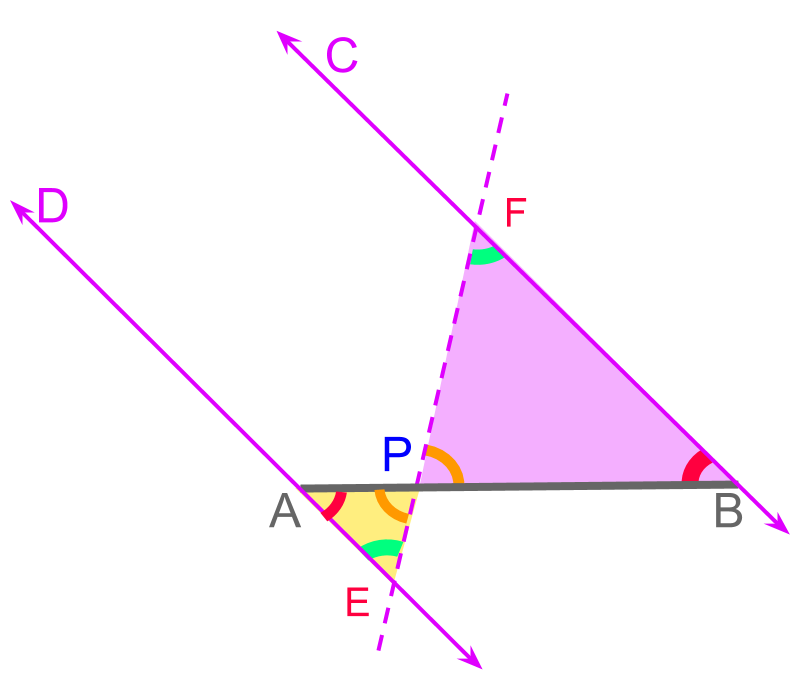
scaling a triangle in a given ratio


scaling a polygon in a given ratio
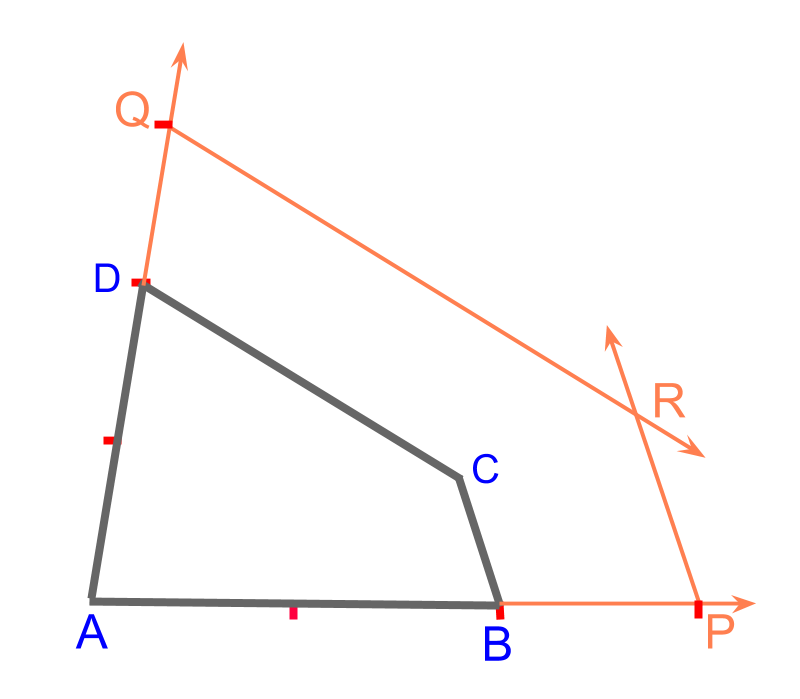
scaling a circle
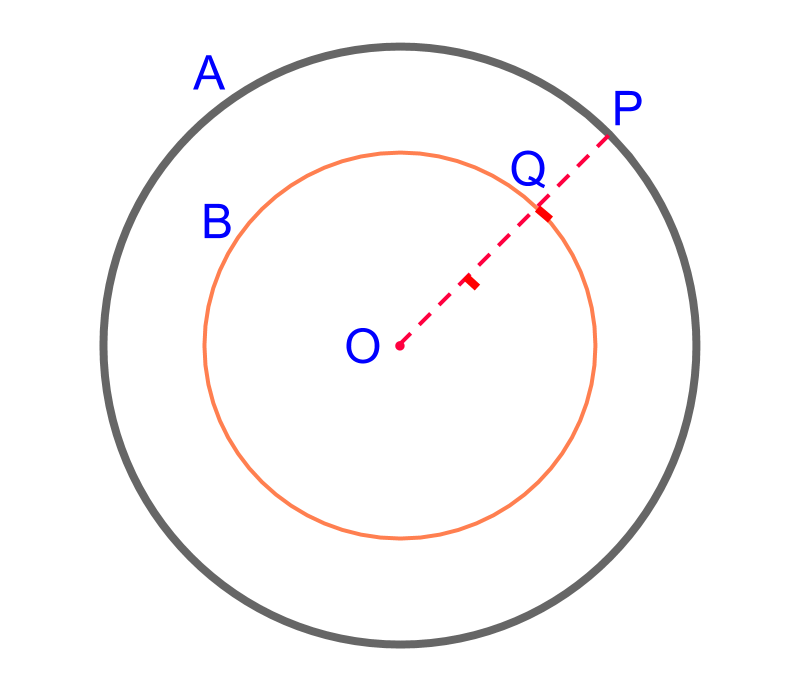
problem
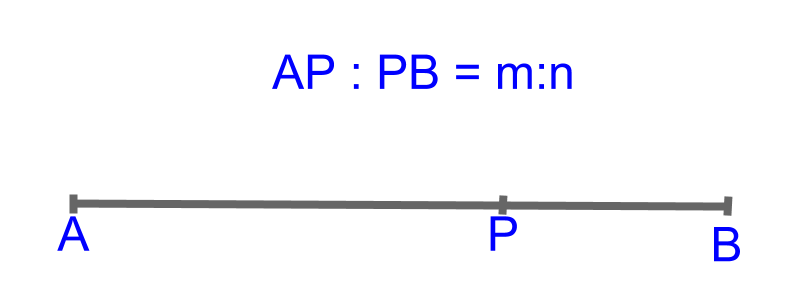
Given a line segment , it is required to mark a point such that, . That is, the is divided to and in ratio.
To achieve that, we use properties of similar triangles.
A set of similar triangles are formed with as one of its sides. The formulation is shown in the figure. In such a construction, the following properties are noted.
•
•
The construction is explained in following pages.
The construction is visualized in the following.
• Construct a ray at an angle, of any measurement.
• In a compass, take a measurement
• Using the compass, mark a number of segments on the ray.
• Construct line to
• Construct a line through the the point
• The point of intersection of the line through and is marked .
The figure illustrates different angles , , and . The procedure to construct will work for any arbitrary measure of angle.
Continuing on dividing line segment in ratio . The construction is visualized in the following.
• Construct a ray at an angle
• In a compass, take a measurement. Any arbitrary length will do fine.
• Using the compass, mark a number of segments on the ray.
• Construct line to
• Construct a line through the the point
• The point of intersection of line through and is marked .
Continuing on dividing in ratio . The figure illustrates different measures on compass. The procedure to construct will work for any arbitrary length.
Continuing on dividing line segment in ratio . The construction is visualized in the following.
• Construct a ray at an angle
• In a compass, take a measurement
• Using the compass, mark a number of segments on the ray. To achieve , sum of and = segments are marked.,
• Construct line to
• Construct a parallel to through the the point
• The point of intersection of parallel through and is marked .
Continuing on dividing in ratio . The lines through points , , and are parallel to , , and respectively. By the rules of similar triangles, the lines intersect at point .
The construction is visualized in the following.
• Construct a ray at an angle
• In a compass, take a measurement
• Using the compass, mark a number of segments on the ray.
• Construct line to
• Construct a parallel to through the point
• The point of intersection of the parallel through and is marked .
The ratio is same as the ratio , which is
summary
Segmenting a line in a given ratio (Triangle Method): Use the property of similar triangles the given line can be segmented.
Given to be divided in ratio .
The triangle is constructed with having segments. By using the first segments, the similar triangle is created.
Since, is , by the similarity property of triangle,
segmenting a line
The objective is to divide the given line in ratio . The properties of similar triangles help in acheiving that.

A set of similar triangles are formed with and a pair of parallel lines. The formulation is shown in the figure. In such a construction, the following properties are noted.
•
•
The construction is explained in the following pages.
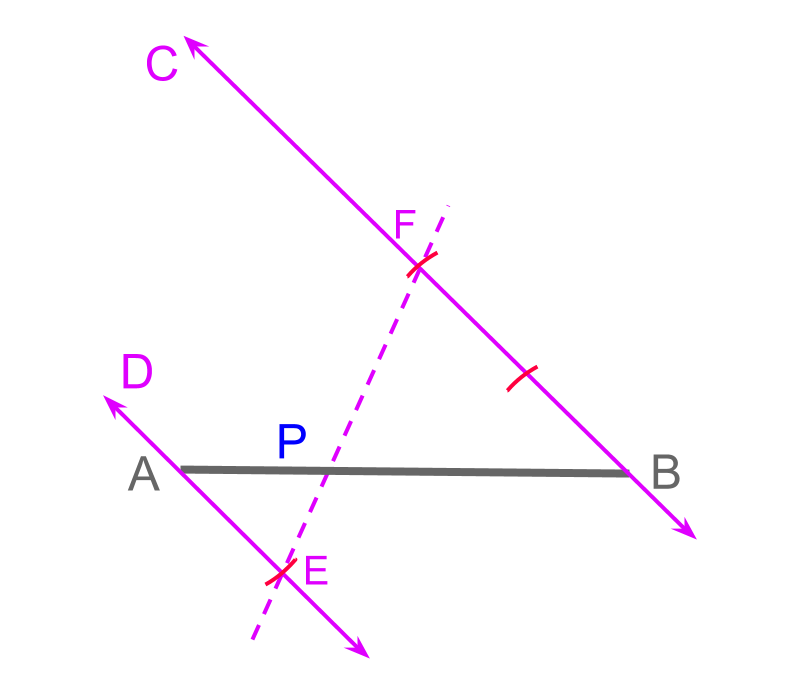
The objective is to divide the given line in ratio .
The construction is visualized in the following.
• Construct a ray at an angle. Any angles will do fine.
• Construct another ray in parallel to .
• In a compass, take a measurement. Any arbitrary length will do fine.
• Using the compass, mark a number of segments on the rays and marking points and .
• Construct line to
• The point is marked at the intersection of and .
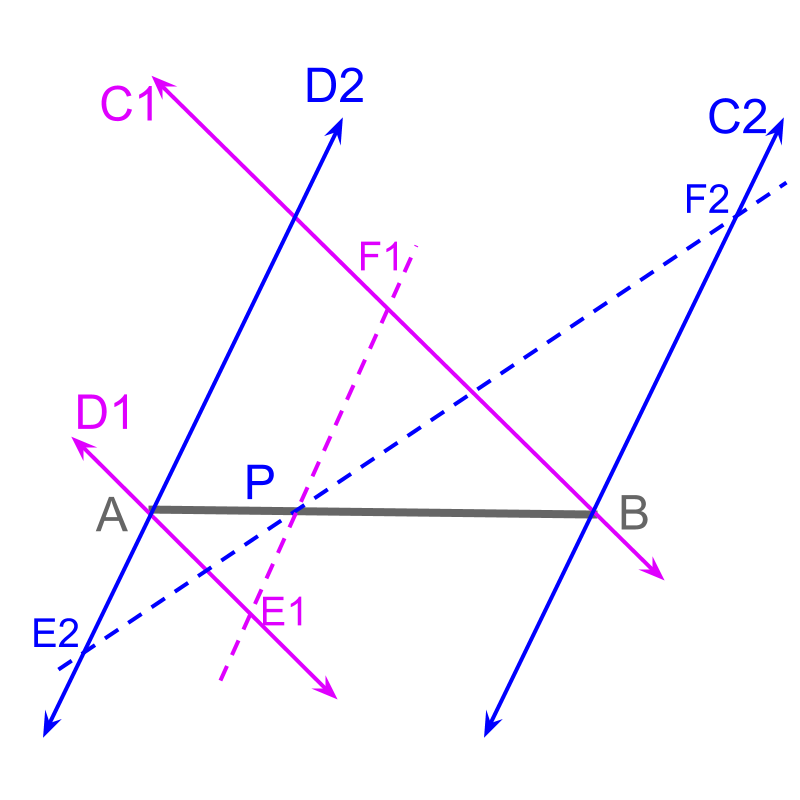
The figure illustrates different angles. The procedure will work for any arbitrary measure of angle.
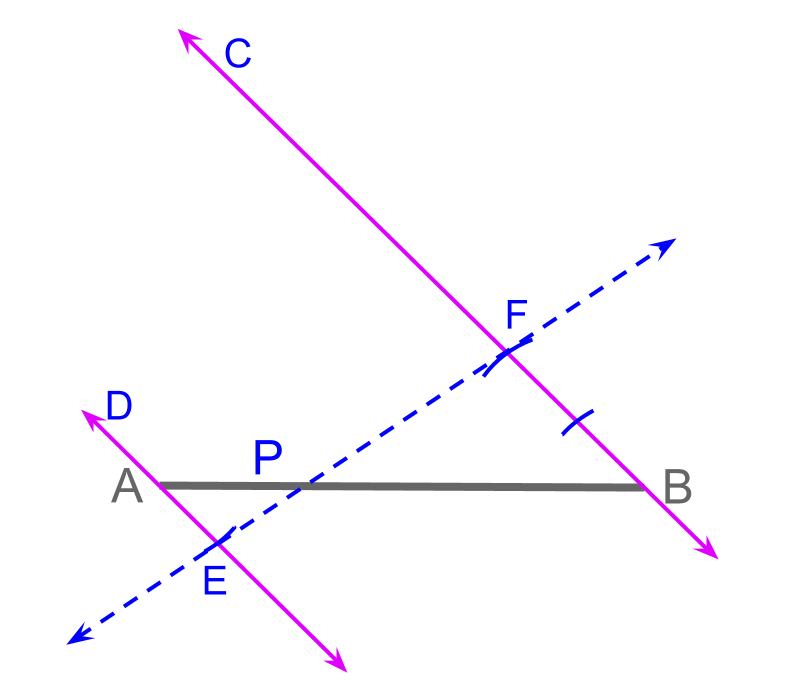
The construction is visualized as given below.
• Construct a ray at an angle
• Construct another ray in parallel to the .
• In a compass, take an arbitrary length on the compass
• Using the compass, mark a number of segments on the rays and marking points and .
• Construct line to
• The point is marked at the intersection of and .
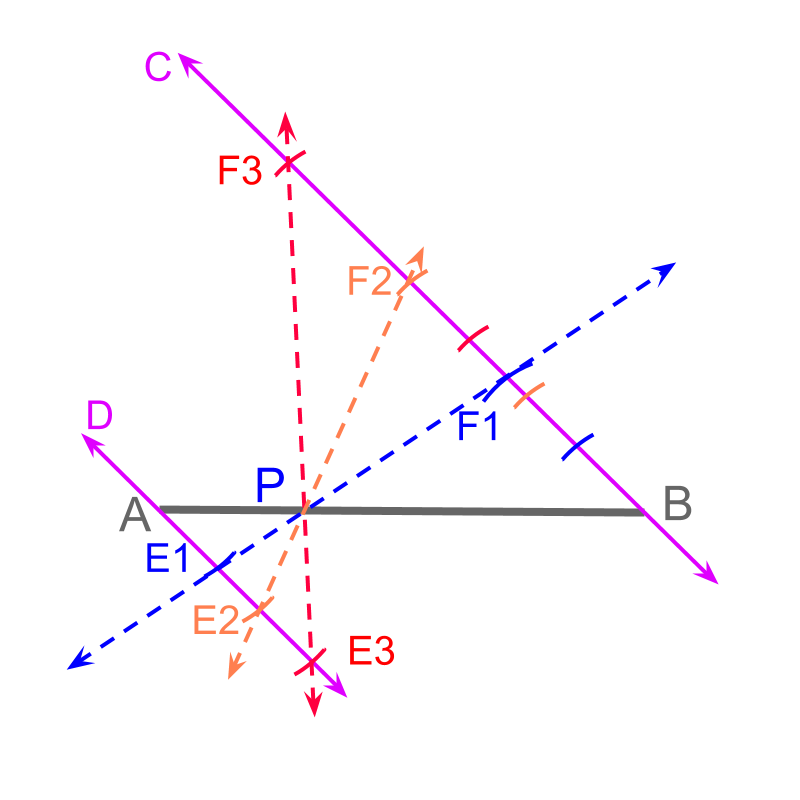
The figure illustrates different measures on compass , , . The procedure to construct will work for any arbitrary length.

Continuing on dividing in ratio .
• Using the measure on the compass, mark a number of segments on the rays and marking points and .
To achieve ratio, the points are marked with segment on and segments on
From the properties of similar trianges, , same as the ratio .
summary

Segmenting a line in a given Ratio (Traversal of pair of parallels) : Use the properties of angles in the traversal of parallel lines and the similar triangles, the given line can be segmented. Given to be divided in ratio .
The parallels and are constructed.
Mark points and in the given ratio . Since is in the given ratio , by the similarity property of triangles,
scale-down a triangle
Consider the given . The objective is to construct such that the corresponding sides are in ratio . To achieve that, the first step is to divide the side to mark point . Then can be constructed to complete .

Considering scaling the given to in the ratio . The given ratio is for the corresponding sides of the triangles, i.e. . But to divide the , the ratio is modified to .

Considering scaling the given to in the ratio . The figure illustrates the solution. The is segmented to and . This marks the point .
To mark , construct the line in parallel to .
summary

Scaling a Triangle:The figure illustrates the solution. The is segmented to and . This marks the point .
The is constructed in parallel to .
is constructed.
scale-up a triangle
Consider the given . The objective is to construct such that the corresponding sides are in the ratio . To achieve that, one of the sides can be scaled-up to construct similar triangles.
Scale-up the side to mark point ;. Then can be constructed to complete .
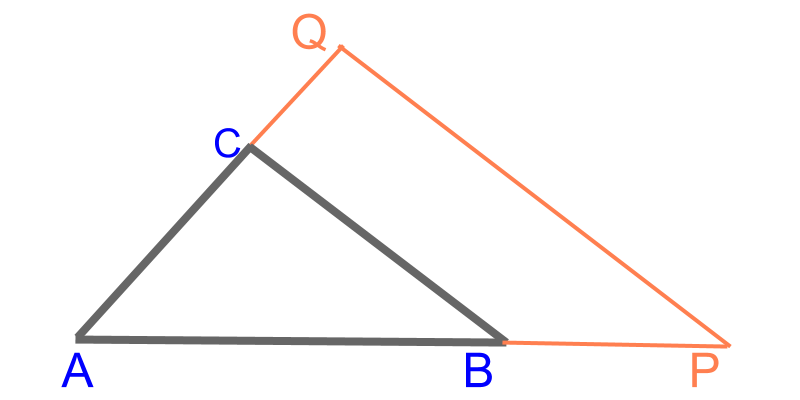
Considering scaling the given to in the ratio . The given ratio is for the corresponding sides of the triangles, i.e. . But to scale the , the ratio is modified to .

The figure illustrates the solution. The is scaled to and . This marks the point . To mark , construct the line in parallel to and extend .
The figure illustrates the solution. The is scaled up to and . This marks the point .
The is extended to the ray . The is constructed in parallel to and that meets .
is constructed.
summary

Scaling of Triangles : To scale a triangle, scale one of the sides and use the properties of similar triangles to construct the scaled triangle.
scaling quadrilateral
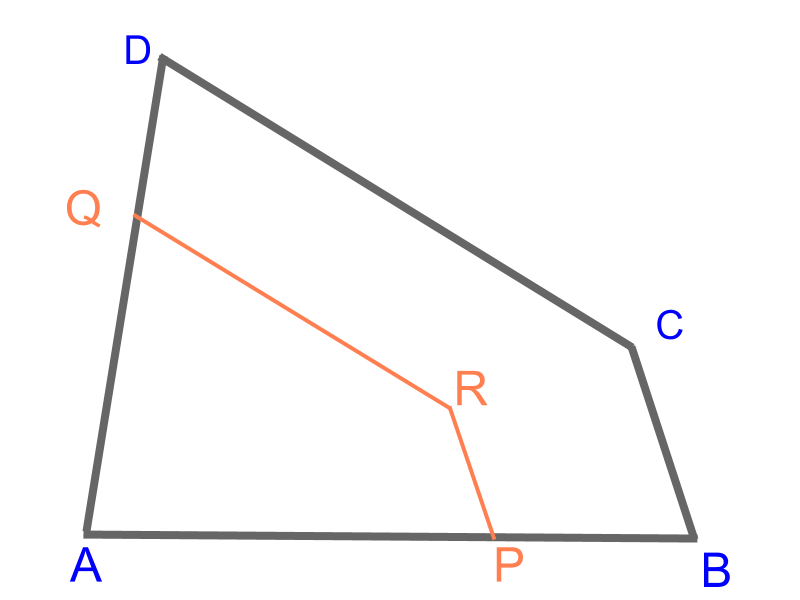
Consider the given quadrilateral . The objective is to construct the quadrilateral such that the corresponding sides are in ratio . To achieve that, divide the sides, to mark points and and construct parallels to mark point .
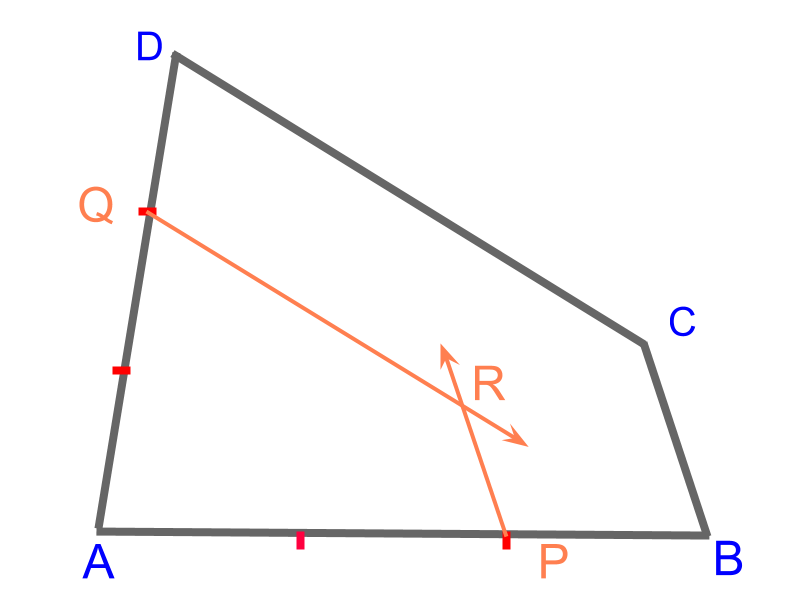
Consider the given quadrilateral . The objective is to construct the quadrilateral such that the corresponding sides are in ratio .
The following steps details construction of the quadrilateral .
• Divide the side to ratio to mark point .
• Divide the side to ratio to mark point .
• Construct two rays and in parallel to and respectively.
• The point of intersection is point .
Quadrilateral is constructed.
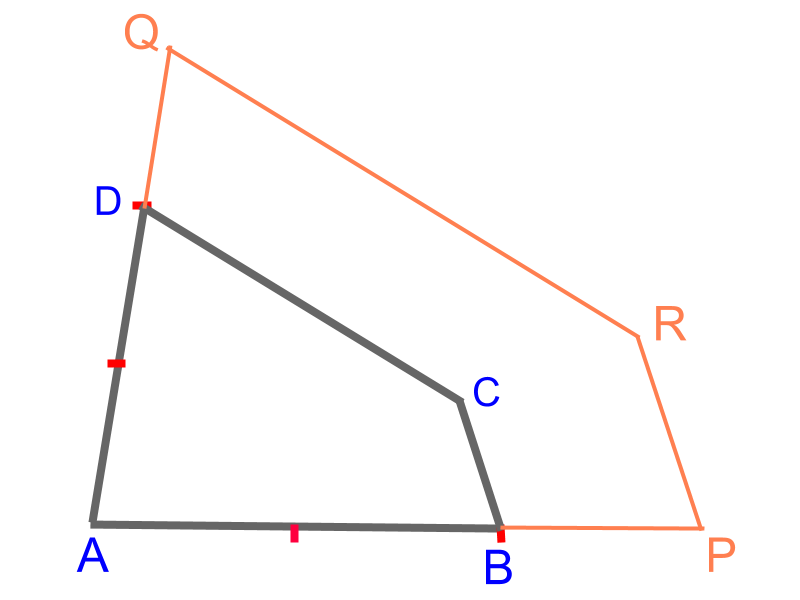
Consider the given quadrilateral . The objective is to construct the quadrilateral such that the corresponding sides are in ratio . To achieve that scale-up the sides, to mark points and and construct parallels to mark point

Consider the given quadrilateral . The objective is to construct the quadrilateral such that the corresponding sides are in ratio
The following steps details construction of the quadrilateral .
• Scale-up the side to ratio to mark point .
• Scale-up the side to ratio to mark point .
• Construct two rays and in parallel to and respectively.
• The point of intersection is point
Quadrilateral is constructed.
summary

Scaling of Polygons : To scale a polygon, scale a side and construct a parallel to the next side and scale the side in the parallel. Continue this with all the sides to complete scaling the given polygon.
scaling a circle
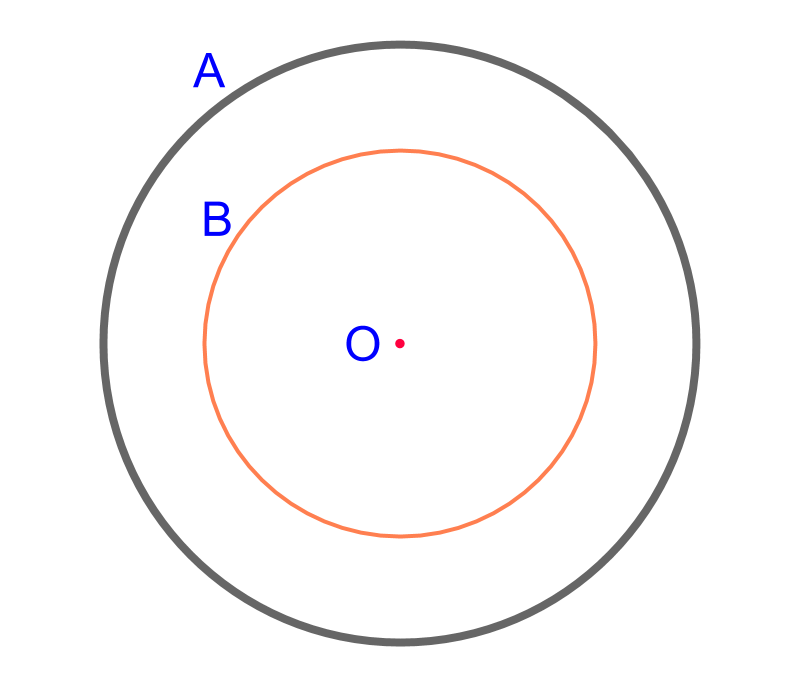
Consider the given circle centered at point . The objective is to construct circle such that the radius are in ratio . To achieve that, construct a radius and divide it in ratio

Consider the given circle centered at point . The objective is to construct circle such that the radius are in ratio
The following steps detail scaling a circle.
• Construct a radius .
• Scale the radius in ratio to mark point .
• Construct a circle with radius .
Scaled Circle is constructed.
summary

Scaling a Circle : To scale a circle, scale a radius as per scaling a line segment. The scaled circle is constructed with scaled line segment as the radius.
Outline
The outline of material to learn "Consrtruction (High school)" is as follows.
Note: Click here for detailed overview of "Consrtruction (High school)"
Note 2: click here for basics of construction, which is essential to understand this.
→ Construction of Triangles With Secondary Information
→ Construction: Scaling a line, triangle, polygon, circle
→ Construction of Tangents and Chord for a circle